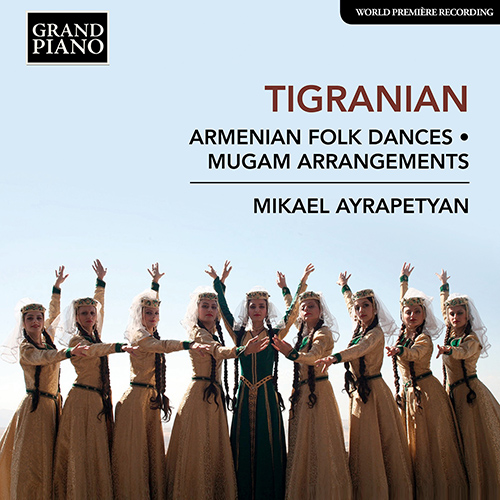
About this Release
“Tigranian's music for me is a detailed image of Armenia, her colour and breath. Composing music of folk dances and mughams for piano was among the highest achievements of Tigranian, which echoes the music of Komitas. When you perform and listen to this music, you are amazed at the richness of culture and landscape of Armenia. This image remains forever within you. I am very glad and grateful to God that I have discovered this music, and I can live in such interesting times and share it with you!” — Mikael Ayrapetyan
TIGRANIAN, NIKOGHAYOS (1856–1951)
Armenian Folkdances • Mugam Arrangements
- Mikael Ayrapetyan, piano
Nikoghayos Tigranian belongs to the first generation of composers and folk song collectors who laid the foundation of an Armenian national style. Tigranian’s piano transcriptions of folk dances is perhaps his most important legacy, emulating folk instruments and capturing and preserving colourful depictions of Armenian folk life that are simple in texture and rich with harmonic and melodic detail. His interest also extended to Persian improvisational vocal-instrumental poems or mugams; expressive pieces that influenced contemporaries and subsequent generations of composers.
This recording was made on a modern instrument: Steinway, Model D
Tracklist
|
Armyanskiye narodnïye tantsï (Armenian Folk Dances) () (00:26:00 )
|
|
1
No. 1. Findjan * (00:01:48)
|
|
2
No. 2. Faten Kitam * (00:01:40)
|
|
3
No. 3. Rangi * (00:01:59)
|
|
4
No. 4. 3 Round Dances: Kyandrabz - Vard Koshikes - Shavali * (00:04:01)
|
|
5
No. 5. Dyuz Par * (00:02:17)
|
|
6
No. 6. Round Dance of Gyumri * (00:03:35)
|
|
7
No. 7. Round Dance of the Erzrumi * (00:02:28)
|
|
8
No. 8. Dance, "Daghstani" * (00:01:09)
|
|
9
No. 9. Back and Forth * (00:02:48)
|
|
10
No. 10. Ver-ver * (00:02:41)
|
|
11
No. 11. Zourni Trngi * (00:01:32)
|
|
12
Bayati-kurd, Op. 2 () * (00:10:17)
|
|
13
Bayati-shiraz, Op. 3 () * (00:08:24)
|
|
14
Heydari, Op. 5 (version for piano) () * (00:03:30)
|
|
15
Shakhnaz, Op. 6 (version for piano) () * (00:07:27)
|
|
16
Nouruz arabi, Op. 10 () * (00:05:07)
|
The Artist(s)
 Mikael Ayrapetyan is a pianist, composer, producer and teacher, as well as a researcher and public figure. He has done much to popularise Armenian classical music all over the world with his Secrets of Armenia musical project, which began during his studies at the Moscow Conservatory. Born in 1984 in Yerevan, Armenia, he studied at the Moscow Tchaikovsky State Conservatory, and continues to uphold the performing traditions of the Russian piano school, of which Konstantin Igumnov, Samuel Feinberg and Lev Oborin are luminaries. His repertoire ranges from the Baroque to the contemporary and includes rarely performed works by Armenian composers. This period was the start of his extensive concert activity in which he performs works by Tigranian, Chukhadjian, Komitas, Melikian, Spendiarian, Barkhudarian, Stepanian, Khachaturian, Babajanian, Arutyunian, Abrahamian, Bagdasarian, Avetisian, Mirzoyan, Amirkhanian and many other Armenian composers, which eventually led him to produce his own concerts. He was awarded the State Prize of the Republic of Armenia for his outstanding contribution to the development and popularisation of Armenian classical music.
Mikael Ayrapetyan is a pianist, composer, producer and teacher, as well as a researcher and public figure. He has done much to popularise Armenian classical music all over the world with his Secrets of Armenia musical project, which began during his studies at the Moscow Conservatory. Born in 1984 in Yerevan, Armenia, he studied at the Moscow Tchaikovsky State Conservatory, and continues to uphold the performing traditions of the Russian piano school, of which Konstantin Igumnov, Samuel Feinberg and Lev Oborin are luminaries. His repertoire ranges from the Baroque to the contemporary and includes rarely performed works by Armenian composers. This period was the start of his extensive concert activity in which he performs works by Tigranian, Chukhadjian, Komitas, Melikian, Spendiarian, Barkhudarian, Stepanian, Khachaturian, Babajanian, Arutyunian, Abrahamian, Bagdasarian, Avetisian, Mirzoyan, Amirkhanian and many other Armenian composers, which eventually led him to produce his own concerts. He was awarded the State Prize of the Republic of Armenia for his outstanding contribution to the development and popularisation of Armenian classical music. The Composer(s)
 Among the first generation of composers and folk song collectors in Armenia, Nikoghayos Tadevosi Tigranian (1856–1951) stands alongside other important figures such as Komitas Vardapet, Tigran Chukhadzhian, Kristapor Kara-Murza and Makar Ekmalian. It was Tigranian and his colleagues who began the systematic collection of folk songs and dances, and laid the foundation of an Armenian national style.
Among the first generation of composers and folk song collectors in Armenia, Nikoghayos Tadevosi Tigranian (1856–1951) stands alongside other important figures such as Komitas Vardapet, Tigran Chukhadzhian, Kristapor Kara-Murza and Makar Ekmalian. It was Tigranian and his colleagues who began the systematic collection of folk songs and dances, and laid the foundation of an Armenian national style. 
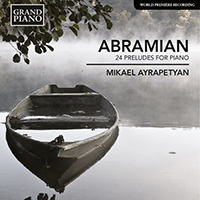
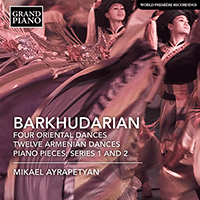
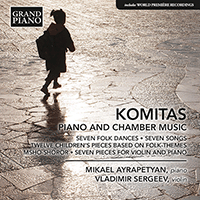
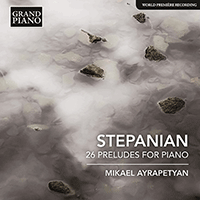
 Grand Piano has gained a reputation for producing high quality recordings of rare keyboard gems. Dedicated to the exploration of undiscovered piano repertoire, the label specialises in complete cycles of piano works by many lesser-known composers, whose output might otherwise have remained unknown and unrecorded.
Grand Piano has gained a reputation for producing high quality recordings of rare keyboard gems. Dedicated to the exploration of undiscovered piano repertoire, the label specialises in complete cycles of piano works by many lesser-known composers, whose output might otherwise have remained unknown and unrecorded.






